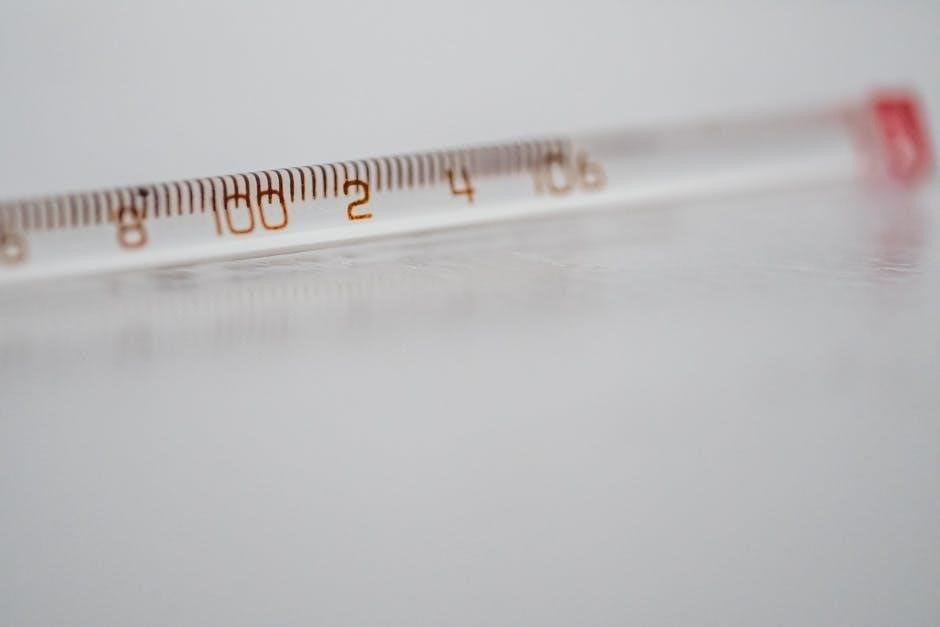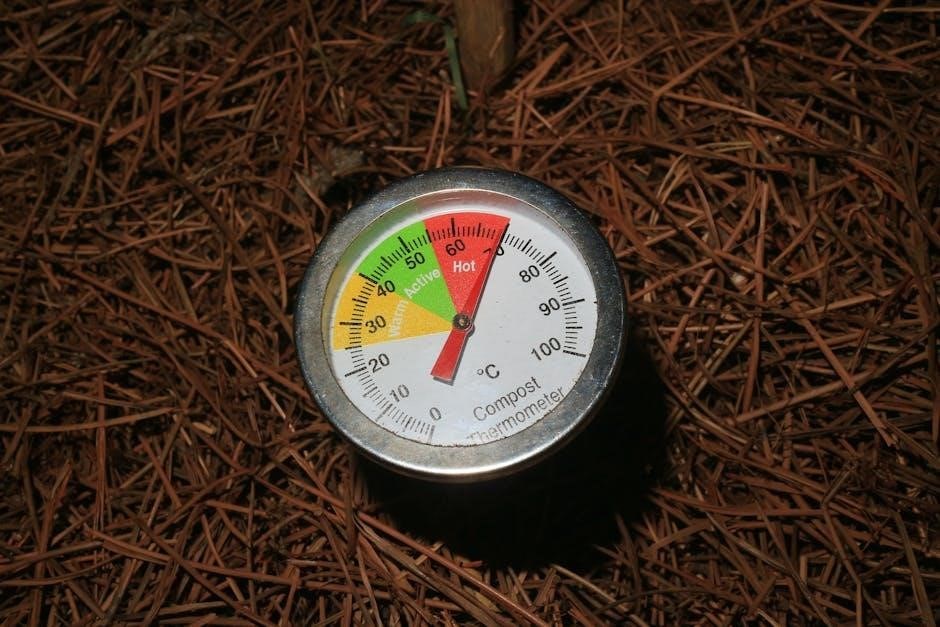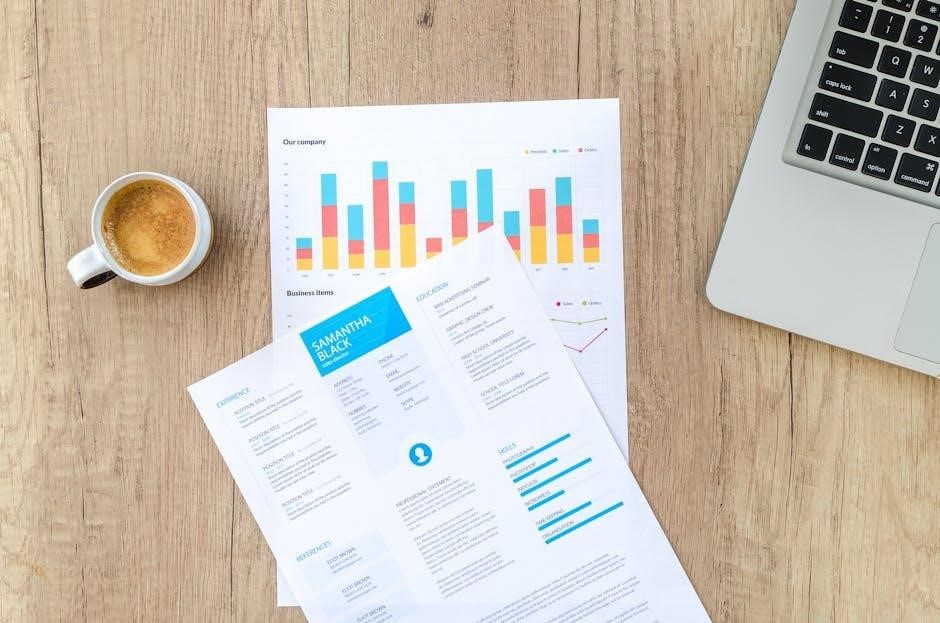A Celsius to Fahrenheit conversion chart is a handy reference tool for quickly converting temperatures between the two scales. It is widely used in everyday tasks, such as cooking, scientific experiments, and weather monitoring. The chart typically includes a range of temperatures, from common values like 0°C to 100°C (32°F to 212°F) to extreme ranges like -40°C to 250°C (-40°F to 482°F). Many charts also provide incremental scaling for precise conversions and include visual aids like tables or graphs for easy reading. With the ability to download and print these charts in PDF format, they remain a practical solution for anyone needing accurate temperature conversions on the go.
1;1 Importance of Temperature Conversion in Daily Life
Temperature conversion is essential for everyday activities, such as cooking, scientific experiments, and weather monitoring. Accurate conversions ensure recipes turn out correctly and experiments yield reliable results. A Celsius to Fahrenheit chart simplifies this process, providing quick reference for common and extreme temperature ranges. Whether adjusting oven settings or understanding global climate data, this tool is indispensable. Its availability in PDF formats makes it easy to access offline, ensuring practicality for both professionals and home users.
1.2 Overview of the Celsius and Fahrenheit Scales
The Celsius scale sets water’s freezing point at 0°C and boiling point at 100°C, while the Fahrenheit scale sets these points at 32°F and 212°F. Both scales are widely used globally, with Celsius predominantly in scientific and international contexts, and Fahrenheit in the United States. Converting between them requires the formula: F = (C × 9/5) + 32 and C = (F ー 32) × 5/9. Understanding these scales is crucial for precise temperature-related tasks, making conversion charts invaluable tools for quick reference.
1.3 Why Use a Conversion Chart?
A Celsius to Fahrenheit conversion chart provides a quick and accurate way to switch between temperature scales without complex calculations. It’s ideal for everyday tasks like cooking, where recipes may use different units, or for scientific experiments requiring precise measurements. Charts often include visual aids and incremental scaling, making them user-friendly. Printable PDF versions allow easy access offline, ensuring reliability in various situations. This tool is essential for anyone needing frequent temperature conversions, offering efficiency and convenience.

How to Create a Celsius to Fahrenheit Conversion Chart
Creating a Celsius to Fahrenheit chart involves using the formula: F = (C × 9/5) + 32. Start by listing Celsius values, calculate Fahrenheit equivalents, and organize the data in a table format. Ensure readability by using incremental scaling and clear fonts. Add visual aids like headers and borders for better navigation. Finally, save or print the chart in PDF format for easy accessibility and offline use.
2.1 Understanding the Conversion Formula
The Celsius to Fahrenheit conversion formula is essential for accurate temperature calculations. To convert Celsius to Fahrenheit, use the formula: F = (C × 9/5) + 32. This formula ensures precise conversions by first multiplying the Celsius temperature by 9/5 and then adding 32 to adjust for the difference in scale origins. Understanding this formula is crucial for creating accurate conversion charts and performing manual calculations when needed. It’s widely used in both everyday applications and scientific contexts, making it a fundamental tool for temperature conversion tasks.
2.2 Steps to Build a Comprehensive Chart
To create a Celsius to Fahrenheit conversion chart, start by defining the temperature range, such as -40°C to 250°C. Next, use the conversion formula F = (C × 9/5) + 32 to calculate equivalent Fahrenheit values for each Celsius input. Organize the data in a table format, ensuring clarity and readability. Include incremental scaling, such as 1°C or 5°C steps, for precision. Finally, add visual aids like headers and grids to enhance usability. This structured approach ensures the chart is both accurate and user-friendly.
2.3 Designing the Chart for Readability
Ensure your Celsius to Fahrenheit chart is visually appealing and easy to navigate. Use clear headers for Celsius and Fahrenheit columns, and include bold or italic text for emphasis. Incorporate grid lines to separate rows and columns, preventing data from blending together. Select a readable font size and style, avoiding clutter. Consider color-coding for different temperature ranges to enhance quick reference. Proper alignment and spacing are crucial for readability, making the chart user-friendly for both digital and printed formats.
Key Features of a Celsius to Fahrenheit Chart
A Celsius to Fahrenheit chart includes temperature ranges, incremental scaling, and visual aids for quick reference. It often covers common to extreme temperatures and is available in PDF format.
3.1 Temperature Ranges
Celsius to Fahrenheit charts typically cover a wide range of temperatures, from -40°C to 250°C (-40°F to 482°F), with incremental scaling for accuracy. Common ranges include 0°C to 100°C (32°F to 212°F), ideal for everyday use. Charts often feature extreme temperatures for specialized needs, such as scientific applications. Specific points, like water freezing (0°C/32°F) and boiling (100°C/212°F), are highlighted for quick reference. Printable PDF charts ensure easy access to these temperature conversions.
3.2 Incremental Scaling
Celsius to Fahrenheit charts use incremental scaling to provide precise temperature conversions. Each degree Celsius is paired with its exact Fahrenheit equivalent, often in 1-degree increments. This detailed scaling ensures accuracy for both common and extreme temperatures. Charts may also offer 5-degree intervals for quicker reference. The use of clear, evenly spaced increments makes it easy to locate specific temperatures without confusion. This feature is particularly useful for scientific and culinary applications where exact measurements are critical.
3.3 Visual Aids for Quick Reference
Celsius to Fahrenheit charts often include visual aids like tables, graphs, and side-by-side scales for easy comparison. These tools allow users to quickly locate temperatures and their equivalents without complex calculations. Many charts use color-coding or bold formatting to highlight key ranges, such as common cooking temperatures or extreme weather conditions. Some PDF charts also feature grid lines and large fonts to enhance readability. These visual elements make the charts accessible and user-friendly for both casual and professional use.

Popular Temperature Ranges in Conversion Charts
Celsius to Fahrenheit charts often cover temperatures from -40°C to 250°C, including common ranges like 0°C to 100°C for everyday use and extreme ranges for industrial applications.
4.1 Common Conversions (0°C to 100°C)
The range of 0°C to 100°C is the most frequently used in daily life, covering essential temperatures like water freezing (0°C/32°F) and boiling (100°C/212°F). This range is ideal for cooking, education, and general household use. Conversion charts within this span often include incremental scaling, such as 5°C intervals, to ensure readability. They are formatted as tables, listing Celsius alongside equivalent Fahrenheit values, providing quick and accurate references for everyday tasks. This range is a staple in printable PDF charts due to its practicality and widespread applicability.
4.2 Extreme Temperatures (-40°C to 250°C)
For applications requiring broader temperature ranges, charts covering -40°C to 250°C (-40°F to 482°F) are essential. These charts are particularly useful in scientific research, industrial processes, and extreme weather monitoring. The formula F = (C × 9/5) + 32 is applied consistently across this range. Charts often include 5°C increments for clarity, making them suitable for detailed scientific and technical tasks. Printable PDF versions of these charts are widely available, ensuring accessibility for both digital and offline use in specialized fields.
4.3 Specialized Ranges for Cooking and Science
Celsius to Fahrenheit charts often include specialized ranges tailored for cooking and scientific use. For cooking, common ranges are 100°C to 250°C (212°F to 482°F), covering baking, roasting, and frying. In science, charts may extend from -40°C to 100°C (-40°F to 212°F), supporting laboratory experiments and precise measurements. These charts ensure accuracy in critical applications, making them indispensable for professionals and enthusiasts alike. Printable PDF versions are widely available, offering convenience for both kitchen and lab use.

Practical Applications of the Conversion Chart
Celsius to Fahrenheit conversion charts are essential for everyday tasks like cooking, baking, and weather monitoring. They also aid in scientific experiments and industrial manufacturing, ensuring accurate temperature measurements globally.
5.1 Cooking and Baking Across Recipes
Cooking and baking often require precise temperature conversions, especially when following recipes from different countries. A Celsius to Fahrenheit conversion chart is invaluable for home cooks and professional chefs alike. For instance, converting 180°C to 350°F ensures perfectly baked goods. The chart also aids in tasks like roasting meats or making candy, where temperature accuracy is critical. By referencing the chart, cooks can seamlessly adapt international recipes, ensuring dishes turn out as intended. This tool is especially handy for those without access to digital converters, making it a kitchen essential.
5.2 Scientific and Laboratory Use
In scientific and laboratory settings, accurate temperature conversions are crucial for experiments and data analysis. A Celsius to Fahrenheit conversion chart serves as a reliable resource for researchers, ensuring precision in measurements. Whether conducting climate studies, material testing, or biological experiments, the chart provides quick reference for converting data. Laboratories often print these charts for offline use, making them easily accessible during experiments. This tool supports consistency and accuracy, essential for reproducible scientific results and maintaining high standards of research integrity.
5.3 Everyday Weather and Climate Monitoring
A Celsius to Fahrenheit conversion chart is invaluable for everyday weather and climate monitoring. It helps individuals understand temperature reports from different regions, whether in Celsius or Fahrenheit. Printable PDF charts allow users to quickly reference conversions, such as -40°C to 100°C (-40°F to 212°F). This tool is especially useful for tracking global weather patterns or comparing local climate data. By ensuring accurate temperature interpretations, the chart aids in making informed decisions related to daily weather forecasts and long-term climate trends.

How to Use the Conversion Chart Effectively
Efficiently use the chart by quickly locating temperatures and interpreting equivalent values. Ensure accuracy by cross-referencing formulas and avoiding common errors in conversion processes.
6.1 Locating Temperatures Quickly
To locate temperatures quickly, use the Celsius to Fahrenheit conversion chart PDF, which features organized tables with clear formatting. The chart typically lists Celsius values in one column and their Fahrenheit equivalents in another, allowing for fast lookup. Many charts include bold headers and grid lines to enhance readability. Side-by-side scales enable easy comparison, while incremental scaling ensures precise conversions. Common ranges like -40°C to 100°C are often highlighted, and extreme temperatures are included for specialized needs. Visual aids like color-coded sections or larger fonts for key values further speed up navigation.
6.2 Interpreting Equivalent Values
Interpreting equivalent values on a Celsius to Fahrenheit conversion chart involves matching temperatures on both scales. For instance, 0°C corresponds to 32°F, while 100°C equals 212°F. The chart provides a clear, side-by-side comparison, making it easy to identify equivalent values. Bold headers and grid lines help distinguish rows and columns, while incremental scaling ensures accuracy. Common ranges like -40°C to 50°C are included, along with extreme temperatures for specialized use. The chart’s design allows users to quickly cross-reference values, ensuring precise conversions for any application, from cooking to science.
6.4 Troubleshooting Common Errors
When using a Celsius to Fahrenheit conversion chart, common errors include misreading values or misaligning temperatures. To avoid mistakes, ensure the chart is printed clearly and scaled correctly. Double-checking values with a digital converter can help verify accuracy. Pay attention to incremental steps, as small miscalculations can lead to significant errors. For instance, confusing 1°C with 1°F can result in incorrect conversions. Always cross-reference temperatures to ensure precision, especially in critical applications like cooking or scientific experiments.

Downloading and Printing the Chart
Download a Celsius to Fahrenheit conversion chart PDF from reliable online sources like UnitMaster.in or Printablee. Ensure the chart is print-friendly, adjusting settings for clarity. Save it for offline use or print it for quick reference, making it easily accessible for everyday needs or critical applications.
7.1 Finding Reliable PDF Sources Online
Reliable Celsius to Fahrenheit conversion chart PDFs can be found on trusted websites like UnitMaster.in or Printablee. These sources offer comprehensive and accurate charts, often with incremental temperature ranges and clear formatting. Look for charts that include both common and extreme temperatures, such as -40°C to 250°C, ensuring versatility for various applications. Many charts are specifically designed for printing, with options to download in PDF format for offline use, making them easily accessible for quick reference or physical use.
7.2 Adjusting the Chart for Print-Friendly Formats
To ensure your Celsius to Fahrenheit conversion chart is print-friendly, adjust the layout and formatting. Select standard paper sizes like A4 or Letter for compatibility. Use landscape orientation for wider temperature ranges and adjust margins to maximize space. Scale the chart to fit the page without losing readability. Ensure fonts are clear and large enough for easy viewing. Check the print preview to confirm the chart aligns correctly and all data is visible. This ensures a crisp, professional printout for everyday use.
7.3 Saving the Chart for Offline Use
Downloading a Celsius to Fahrenheit conversion chart PDF allows you to save it for offline use. Use tools like Handypdf.com to edit and save the chart. Ensure the file is in a format compatible with your devices. Save it to your cloud storage or local drive for easy access. This is ideal for areas with limited internet connectivity. Print or view the chart anytime, ensuring you always have a reliable temperature conversion reference available. This convenience makes it perfect for everyday use or emergency situations.

Comparing Celsius and Fahrenheit Scales
The Celsius scale sets water’s freezing point at 0°C and boiling at 100°C, while Fahrenheit uses 32°F and 212°F for the same points. This difference makes Celsius more intuitive for scientific and global use, while Fahrenheit remains popular in the U.S. for weather and cooking. Both scales coexist, reflecting historical and regional preferences worldwide.
8.1 Historical Background
The Celsius scale was introduced by Anders Celsius in 1742, based on water’s freezing and boiling points. In contrast, the Fahrenheit scale, developed by Gabriel Fahrenheit in 1724, used a different reference point: the freezing of a saltwater solution. Over time, Celsius became the global standard for scientific use, while Fahrenheit remained prevalent in the United States for everyday applications. This historical divergence explains their coexistence and the need for conversion tools like the Celsius to Fahrenheit chart PDF.
8.2 Key Differences in Measurement
The Celsius scale defines 0°C as water’s freezing point and 100°C as its boiling point, dividing the range into 100 equal parts. In contrast, the Fahrenheit scale sets water’s freezing point at 32°F and boiling point at 212°F, dividing the range into 180 parts. This difference in intervals means each degree Celsius equals 1.8 degrees Fahrenheit. These distinctions necessitate precise conversion tools, such as a Celsius to Fahrenheit chart PDF, to ensure accuracy in temperature measurements and applications.
8.3 Global Usage Patterns
The Celsius scale is predominantly used worldwide, especially in scientific and everyday applications, while Fahrenheit is mainly utilized in the United States and a few Caribbean nations. This divergence reflects cultural and historical influences. Many countries adopt Celsius for weather forecasting and cooking, whereas the U.S. often uses Fahrenheit for similar purposes. The coexistence of both scales necessitates tools like the Celsius to Fahrenheit chart PDF to bridge communication gaps in global contexts, ensuring clarity in temperature-related tasks and discussions across borders.

FAQs About the Conversion Chart
FAQs about the Celsius to Fahrenheit chart PDF often include questions like: “What temperature ranges are covered?” “Can I customize the chart?” and “How frequently is it updated?”
9.1 What Temperatures Are Included?
The Celsius to Fahrenheit chart PDF typically includes a wide range of temperatures, from -40°C to 250°C, covering common, extreme, and specialized ranges. It provides conversions in 1°C increments for precision, making it suitable for various applications like cooking, science, and everyday use. The chart also highlights key points, such as the freezing and boiling points of water (0°C/32°F and 100°C/212°F), ensuring comprehensive coverage for all user needs.
9.2 Can I Customize the Chart?
Yes, many Celsius to Fahrenheit chart PDFs can be customized to suit specific needs. Users can often adjust temperature ranges, add notes, or highlight key conversions. Some charts are editable via software, allowing modifications like font size or color. Additionally, fillable PDFs, such as those from Handypdf.com, enable users to input custom temperatures or annotations. This flexibility makes the charts adaptable for personal, educational, or professional use, ensuring they meet individual requirements effectively.
9.3 How Often Is the Chart Updated?
Celsius to Fahrenheit charts are typically updated annually or as new versions become available. Many reliable sources, such as UnitMaster.in or Printablee.com, ensure their charts are current and accurate. Some charts, like those from Oven Industries, are updated periodically to reflect user needs. Additionally, fillable and editable PDFs, such as those on Handypdf.com, allow for customization without requiring frequent updates. Always check the source for the most recent version to ensure accuracy.

The Role of Conversion Charts in Education
Conversion charts are invaluable in education, aiding teachers in instructing temperature conversion, assisting students with homework, and enriching STEM lessons through interactive and visual learning tools.
10.1 Teaching Temperature Conversion to Students
Conversion charts are essential tools for teaching temperature conversion to students. They provide a clear, visual representation of Celsius and Fahrenheit equivalencies, making complex relationships easier to understand. Teachers can use these charts to demonstrate step-by-step conversions, while students can practice independently for homework or projects. The charts also support STEM education by linking theoretical concepts to practical, real-world applications, such as cooking or scientific experiments, fostering a deeper understanding of temperature measurement and its everyday uses.
10.2 Using Charts for Homework and Projects
Conversion charts are invaluable for homework and projects, offering a straightforward way to understand temperature relationships. Students can use printable PDF charts to complete assignments accurately, ensuring precise conversions between Celsius and Fahrenheit. These charts are particularly useful for science projects, where temperature accuracy is critical. By providing a visual reference, they simplify complex calculations, allowing students to focus on understanding the underlying principles rather than getting bogged down in math. This makes learning more efficient and engaging for young scholars.
10.3 Enhancing STEM Learning Experiences
Celsius to Fahrenheit conversion charts are powerful tools in STEM education, bridging theory and practical application. They help students grasp fundamental concepts of measurement and unit conversion, essential for physics, chemistry, and engineering. By using these charts, learners can visualize relationships between scales, fostering a deeper understanding of temperature dynamics. This hands-on approach not only reinforces mathematical skills but also prepares students for real-world problem-solving, making STEM subjects more accessible and engaging for diverse learning styles and abilities.

The Importance of Accurate Conversion
Accurate temperature conversion is crucial in critical applications like cooking and science, where even small errors can lead to significant consequences. Using reliable charts ensures precision and avoids costly mistakes.
11.1 Avoiding Errors in Critical Applications
In fields like cooking, scientific research, and manufacturing, precise temperature control is essential. Small conversion errors can lead to faulty results, damaged equipment, or unsafe conditions. Using a reliable Celsius to Fahrenheit chart helps minimize risks by providing accurate conversions. For instance, in baking, a slight temperature mismatch can ruin recipes, while in science, it may invalidate experimental data. Double-checking conversions with a trusted chart or digital tool ensures consistency and prevents costly mistakes. Accurate temperature management is vital for achieving desired outcomes in these critical areas.
11.2 Ensuring Precision in Measurements
Accurate temperature conversion is crucial for maintaining precision in scientific, engineering, and culinary applications. A Celsius to Fahrenheit chart provides exact conversions, reducing errors in critical measurements. By using a reliable chart, professionals can ensure consistency across experiments, manufacturing processes, and recipe outcomes. Incremental scaling and formatted tables in the chart allow for quick, error-free reference. Regularly updating or verifying the chart ensures adherence to precise standards, making it an indispensable tool for professionals who cannot afford measurement inaccuracies.
11.3 Real-World Consequences of Inaccuracies
Inaccurate temperature conversions can lead to significant real-world issues, particularly in fields like cooking, science, and manufacturing. For example, incorrect oven temperatures can ruin recipes, while faulty scientific measurements may invalidate experimental results. In industrial settings, improper temperature control can damage materials or machinery. Using a reliable Celsius to Fahrenheit chart helps mitigate these risks, ensuring precise conversions and preventing costly errors. The consequences of inaccuracy underscore the importance of relying on trusted tools for temperature conversion.
A Celsius to Fahrenheit conversion chart is an essential tool for accurate temperature conversions, offering quick reference and practical solutions for everyday tasks and professional applications.
12.1 Summary of Key Points
A Celsius to Fahrenheit conversion chart is a practical tool for accurate temperature conversions, offering quick reference and ease of use. It includes formulas, incremental scaling, and visual aids for clarity. The chart covers a wide range of temperatures, from common to extreme, making it versatile for various applications. Its availability in PDF format allows for easy printing and offline access. By providing precise conversions, it helps avoid errors in critical tasks like cooking, science, and weather monitoring, ensuring reliability and efficiency for both professionals and home users.
12.2 Final Thoughts on Using the Chart
Using a Celsius to Fahrenheit conversion chart is an efficient way to ensure accurate temperature conversions. Its simplicity and comprehensive coverage make it indispensable for everyday tasks, cooking, and scientific applications. The chart’s availability in PDF format allows easy access and printing, ensuring it’s always handy. Whether for quick references or detailed calculations, this tool remains a reliable resource for anyone needing precise temperature conversions, making it a must-have for both professionals and casual users alike.
12.3 Encouragement to Explore Further Resources
Exploring additional resources can enhance your understanding of temperature conversion. Websites like Printablee and UnitMaster.in offer free PDF charts and calculators. These tools provide detailed tables, formulas, and guides for precise conversions. For specialized needs, such as cooking or lab work, customizable charts are available. Digital apps and converters can also streamline your workflow. By leveraging these resources, you can master temperature conversion, ensuring accuracy and efficiency in all your tasks. Continuous learning and exploration will keep you well-equipped for any situation requiring temperature adjustments.